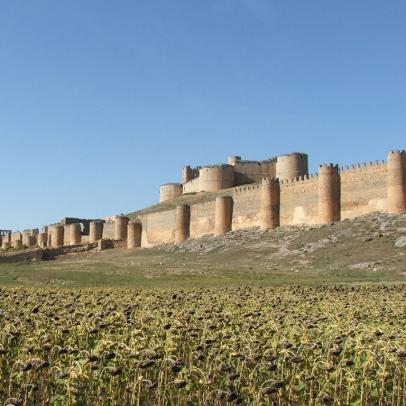This 15th century castle was built in the Renaissance style over a 12th century structure, which, in turn, had been constructed re-using the walls of a 10th century Arab-Caliphate alcazaba. The hill on which the castle is situated is limited to the northern part by the river Escalote and to the southern part by a line of walls and crenellated cubes. It is almost certain that the fortress that El Cid made out was this Islamic construction.
Berlanga de Duero, Vadorrey, which is now a deserted area (in Morales), and Gormaz were all under Muslim control until 1060, when they were taken by Fernando I, Alfonso VI’s father. After having been exiled, El Cid returned to Castile and was reconciled to the king Alfonso VI. He had spent five years offering his services to the Muslim dynasty that ruled Zaragoza. There are scholars who argue that the King Alfonso showered El Cid, as a sign of reconciliation, with honours and lands, including Berlanga de Duero, Langa and Gormaz with all of its dependants.
According to El Cantar de Mío Cid, El Cid’s daughters and the men that escorted them (Félez Muñoz, Álvar Fáñez, Pedro Bermúdez, Martín Antolínez and two hundred horsemen) took up their lodging at Berlanga de Duero on their way to Valencia after the Afrenta de Corpes episode.
The current fortress is built in a quadrangular form and has solid and large cubes. The building’s structure is divided into two separate parts: the 15th century castle (interior structure), which has a rectangular base, and the 16th century artillery fortress surrounding the castle, whose shape is adapted to the hill. Some parts of the dressed quarry stone walls are almost five metres wide.
Rev. PAB: 28.12.18











